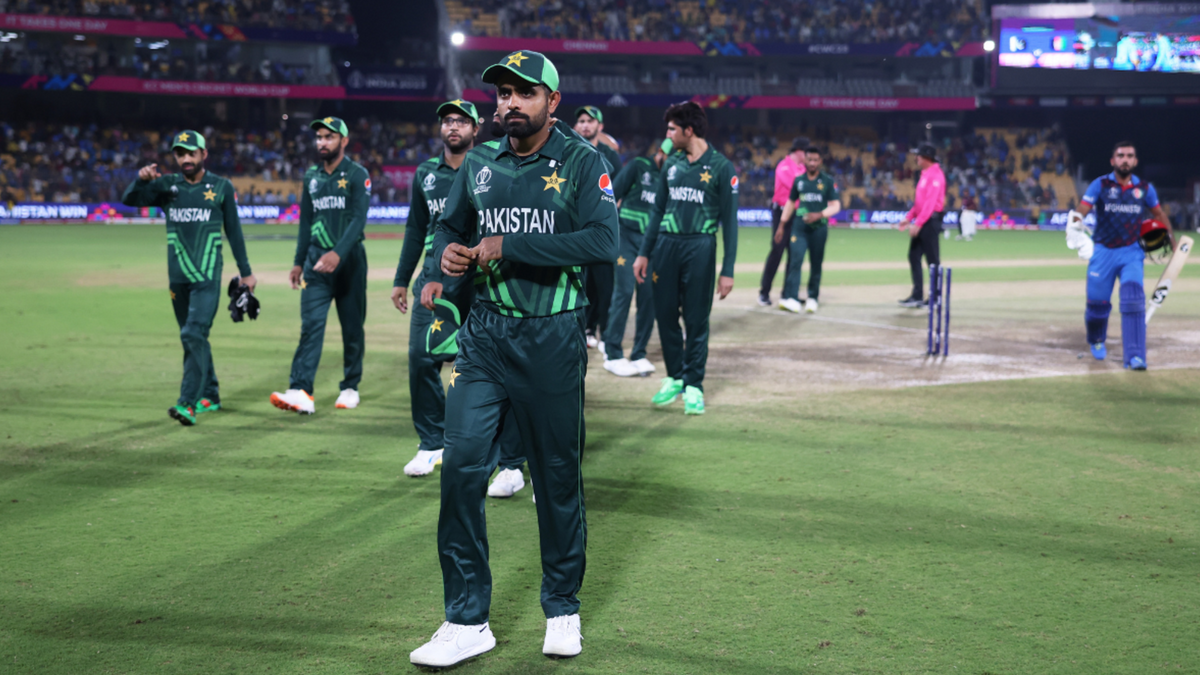
Pakistan’s 2023 World Cup had started going off the rails before it had even started, writes Aadya Sharma.
To bet on the World Cup with our Match Centre Partners bet365 head here.
How do you unpack a campaign like Pakistan’s? For many, they were among the favourites going into the tournament, stacked with bowling champions and top-class batters. By the end, cricket had taken a backseat, rumours and fault-finding dominated the headlines and it was left to Qudrat-ka-Nizam to conjure a miracle.
There were several issues, but let’s get Naseem Shah out of the way first. Yes, he was a massive absence, but big-tournament injuries should always be expected and anticipated. Pandya, Williamson, Nortje, Henry: other teams had their fill of absentees too. How Pakistan dealt with Naseem’s injury was the bigger issue.
In Hassan Ali, they reined in experience, but his lack of recent game time for Pakistan posed a problem. When he returned for the Asia Cup, it was after a one-year hiatus from international cricket. He had played in the County Championship and the Lanka Premier League, vastly different from what a role in the World Cup would require. In fact, until his comeback, he had played just seven ODIs since the 2019 edition.
Hassan leapfrogged Mohammad Wasim Jnr, their old-ball specialist, in the pecking order. When Wasim came into the XI deep into the tournament, it was also on the back of erratic game time. He got one game at the Asia Cup, with just one other ODI appearance since June. He hasn’t played a T20I since March either, which, again indicated a lack of depth-building. It’s what sets teams like India apart – their wider pool are also international regulars.
Shaheen Shah Afridi was left with little support. Haris Rauf bled runs, the most ever by a bowler in a single World Cup. The powerplay was a big issue altogether – they picked up just nine wickets in as many games, the second-lowest count among all teams, along with the worst average (63.11) and economy rate (6.31).
While other teams could pick and choose when to bring on their spinners, Pakistan had to hide theirs. The lack of a genuine wicket-taking spinner really hurt them. Shadab Khan came into the tournament deep into a run of poor form, while Mohammad Nawaz wasn’t their best attacking option. Usama Mir’s entry exuded rawness.
Pakistan’s spin problems aren’t new: since the start of 2022, among all teams to play men’s ODIs, the bowling average of Pakistan spinners – 46.92 – ranks 19th out of 22 and the economy – 5.62 – is 19th out of 22.
On to the big names. The World Cup was a collective sum of average performances from the men that mattered the most. Babar Azam, long touted to be cricket’s new crown prince, had a scratchy campaign. There were four fifties but nothing above 75, and ill-timed dismissals only added to the frustration.
His strike rate didn’t match today’s one-day standards. His leadership couldn’t haul a team already struggling with resources, and by the end of it, the uninspiring, often defensive captaincy found several detractors.
So was the case with Mohammad Rizwan. Inconsistency has hurt him throughout his odd ODI career, but that looked to have changed when his unbeaten 131 helped propel a record chase against Sri Lanka. From there, odd bits of contribution never transpired to anything worthy enough. Barring Fakhar Zaman, the other batters just seemed to be playing catch-up.
To add to that, their ground fielding was not befitting of a semi-final making team, and dropped catches, some of them absolute sitters, really hurt them.
Combine this with all the commotion back home, and it was a disaster waiting to happen. Mickey Arthur’s role – and the level of his involvement in particular – only created more confusion. The rapidly changing administration ensured there was no consistency in selection.
It’s still a relatively young team with plenty more promising players waiting in the pipeline. The National Cricket Academy and the Shaheens set-ups will have to play a big role in bridging the gap between the two levels.
This campaign will be remembered much for more wrongs than rights.








